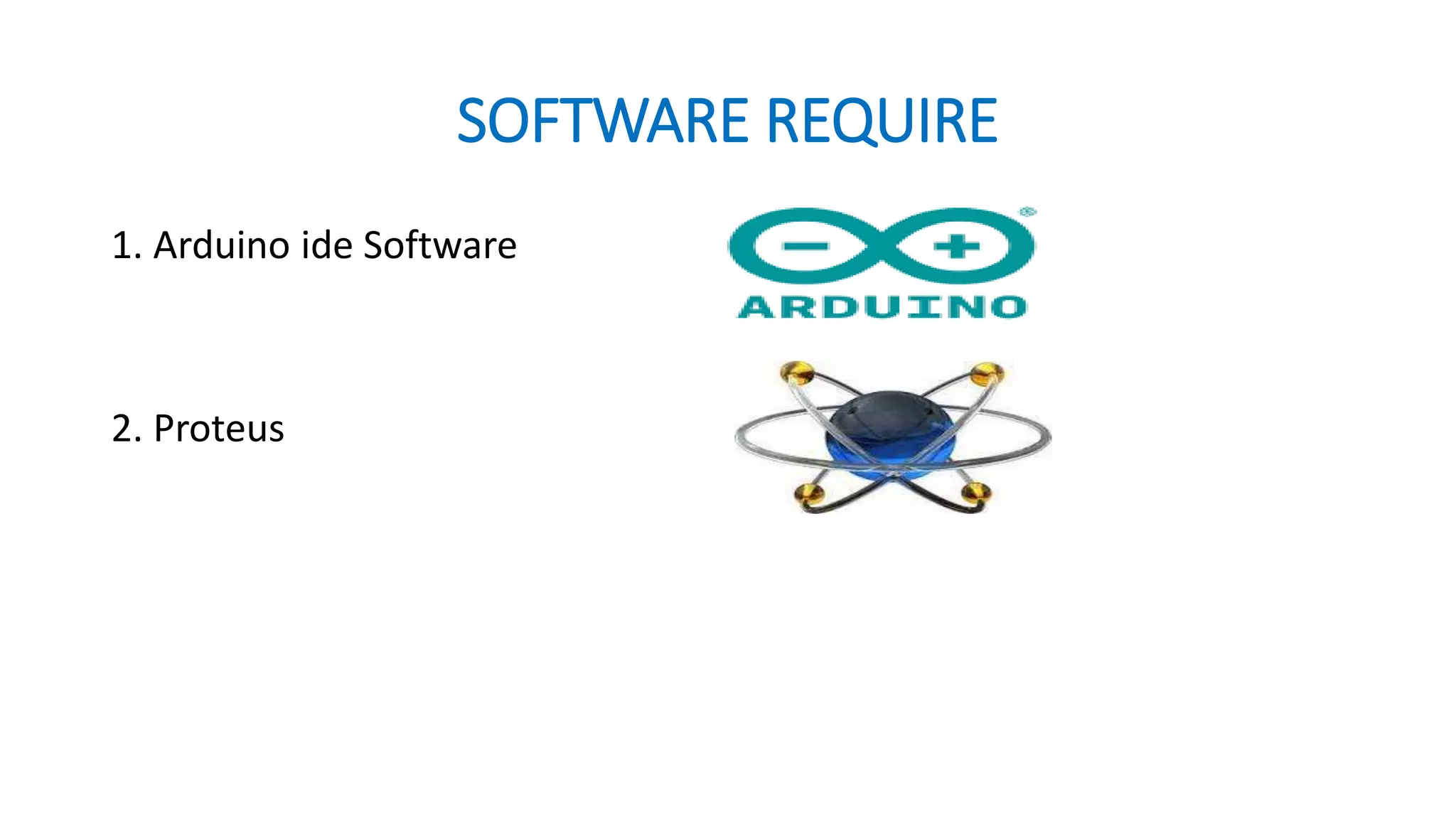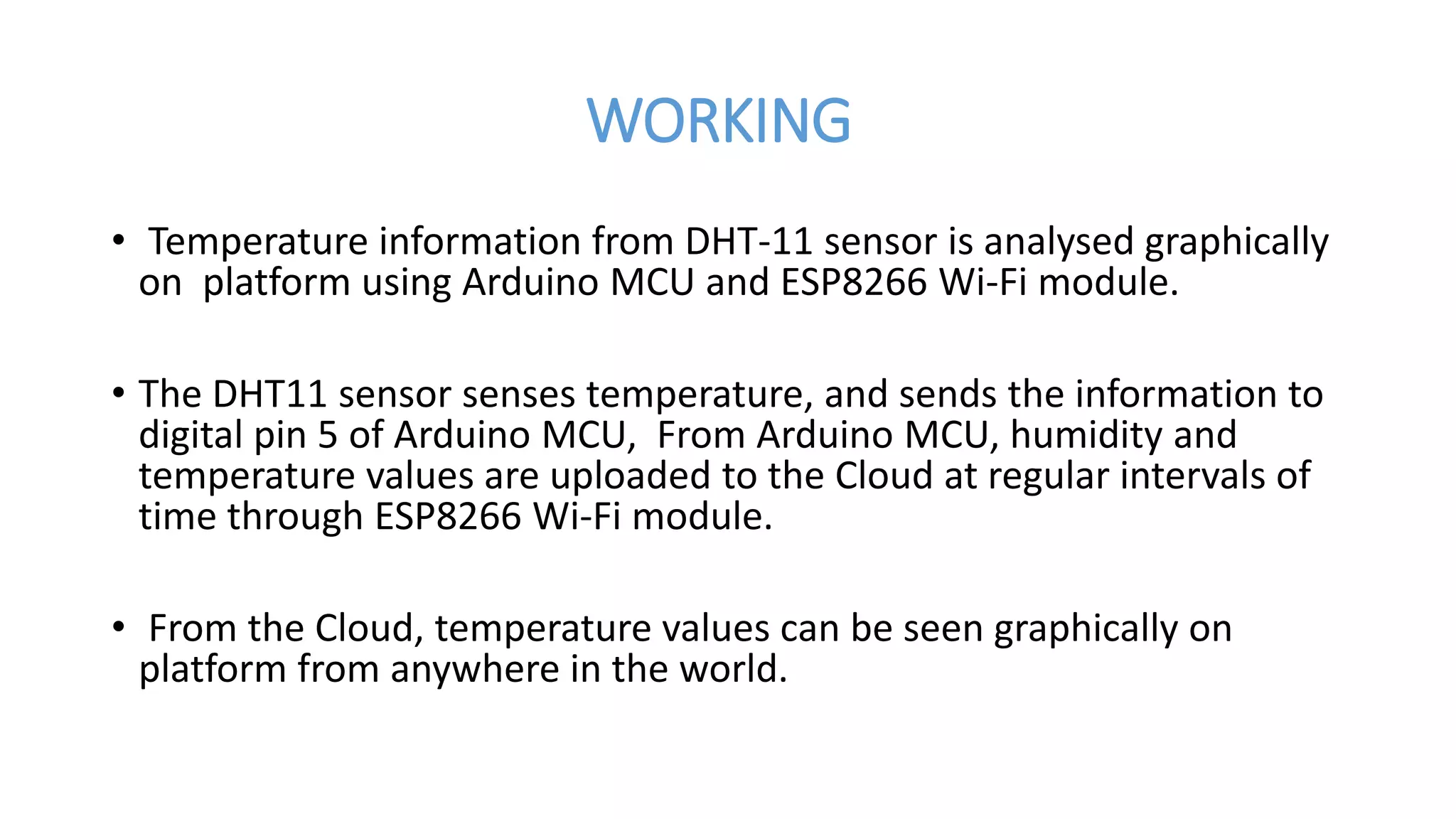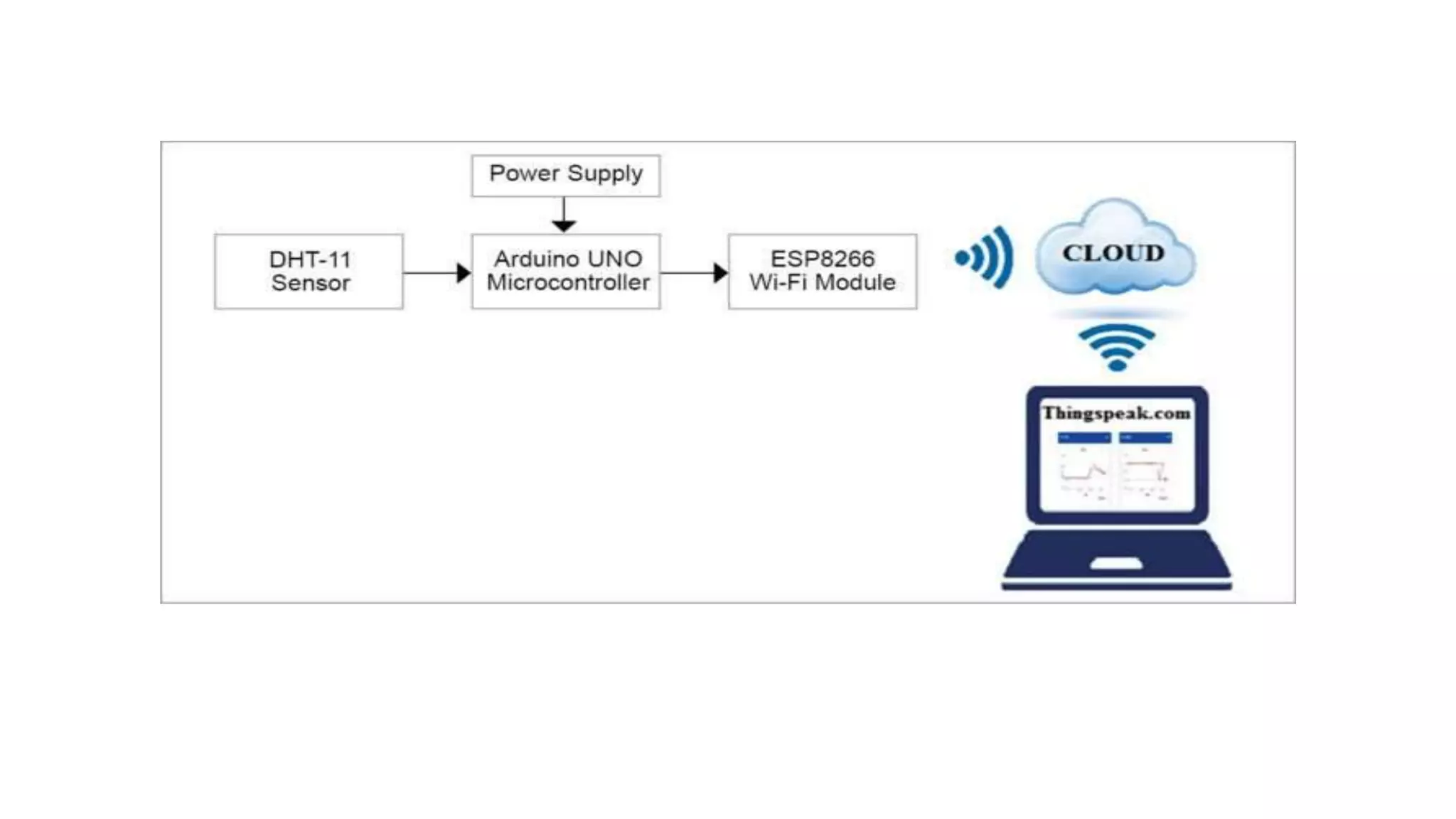The document proposes a temperature monitoring system using an Arduino Uno, ESP8266 Wi-Fi module, DHT11 temperature and humidity sensor, and 9V battery. The DHT11 sensor measures temperature and sends the data to the Arduino MCU, which then uploads the values to the cloud through the ESP8266 module. Users can view the temperature graphically from anywhere in the world. The system has applications in industries like pharmacy, agriculture, food safety, and equipment monitoring by providing remote temperature monitoring and alerts.










